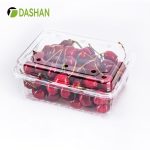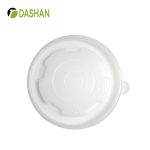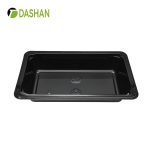Quick Summary
Bagasse tableware turns sugarcane residue into compostable, eco-friendly packaging. It reduces plastic waste, supports global bans, and offers businesses sustainable, scalable solutions.
Introduction
Plastic waste has become one of the most pressing environmental challenges of our time. From single-use plastic forks and cups to polystyrene clamshells, foodservice packaging contributes significantly to pollution and landfill accumulation. Policymakers, businesses, and consumers are all asking the same question: is there a greener alternative?
One of the most promising solutions comes from an unlikely source: bagasse, the fibrous residue left over after sugarcane is crushed for juice. Once considered agricultural waste, bagasse is now being transformed into durable, compostable tableware that is helping foodservice operators reduce their plastic footprint. This article explores how bagasse is processed, its environmental benefits, its role in global packaging policies, and how companies like DASHAN are helping businesses turn waste into eco wins.
What Is Bagasse?
Bagasse is the dry pulpy residue that remains after sugarcane stalks are crushed to extract their juice. Globally, sugarcane is one of the most cultivated crops, with over 1.9 billion tons harvested annually. For every ton of sugarcane processed, about 270 kilograms of bagasse are produced.
Traditionally, bagasse was burned as a low-grade fuel or discarded. Today, with innovations in fiber-molding technology, it has become a valuable raw material for manufacturing eco-friendly food packaging products such as plates, bowls, trays, and clamshells.
The Process: From Cane to Container
The transformation of bagasse into tableware involves several steps:
-
Collection and Cleaning – Bagasse fibers are gathered after sugar extraction and cleaned to remove impurities.
-
Pulping – The fibers are softened and broken down into a pulp, similar to paper production.
-
Molding and Pressing – The pulp is poured into molds and compressed under heat and pressure to form sturdy tableware shapes.
-
Drying and Finishing – Items are dried, trimmed, and sometimes coated with food-safe barriers for enhanced oil and water resistance.
This process is energy-efficient, requires no virgin trees, and utilizes agricultural byproducts that would otherwise go to waste.
Environmental Benefits of Bagasse Tableware
Biodegradability and Compostability
Bagasse products are 100% biodegradable and compostable under industrial conditions. They typically break down within 90–180 days, returning to the earth as organic matter without releasing harmful residues.
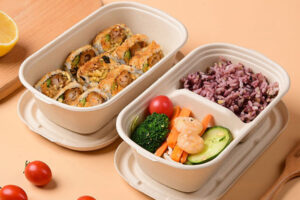
Reduction in Landfill and Incineration
By diverting agricultural waste from incineration and replacing plastic disposables, bagasse reduces both landfill waste and carbon emissions.
Comparison with Plastic and Styrofoam
Unlike polystyrene, which may take centuries to degrade, bagasse offers a short lifecycle and aligns with circular economy principles. Its carbon footprint is significantly lower than petroleum-based plastics.
Expert Insight:
Dr. Lina Howard, an environmental scientist, notes:
“Bagasse tableware exemplifies circular economy thinking—turning waste into value. It not only reduces plastic waste but also makes use of an abundant agricultural byproduct.”
Global Policies Supporting Bagasse Products
European Union
The EU Single-Use Plastics Directive bans plastic plates, cutlery, and expanded polystyrene food containers. Bagasse is considered a compliant alternative, driving demand across member states.
United States
Composting infrastructure in states like California, Oregon, and New York supports certified compostable packaging. BPI (Biodegradable Products Institute) certification ensures bagasse tableware meets safety and compostability standards.
Asia
-
India banned many single-use plastics, encouraging the adoption of bagasse-based products.
-
China has launched a roadmap to phase out non-degradable plastics, boosting agricultural waste–based alternatives.
Case Example: In 2021, several Indian cities mandated compostable packaging in foodservice outlets, leading to widespread adoption of bagasse plates and trays.
Market Applications of Bagasse Tableware
-
Restaurants and Cafes – Many foodservice outlets use bagasse plates and bowls for their natural look and eco-friendly appeal.
-
Takeaway and Delivery – Bagasse clamshells are a sturdy, grease-resistant replacement for plastic takeaway boxes.
-
Airlines and Catering – Airlines are adopting bagasse trays to reduce plastic waste during in-flight meals.
-
Events and Festivals – Large gatherings increasingly use compostable tableware, with bagasse offering both strength and eco-certification.
-
Supermarkets and Retail – Ready-to-eat meal trays made from bagasse are becoming a staple in eco-conscious retail chains.
Expert Insights & Case Studies
Expert View
Professor Mark Ellis, packaging technology researcher, observes:
“Bagasse packaging is especially promising in regions where sugarcane is abundant. It delivers cost efficiency and helps countries meet plastic reduction targets.”
Case Study 1 – Fast-Food Chain in India
A regional fast-food chain switched to bagasse clamshells for burgers and fries. Customers responded positively, with surveys showing 78% approval of the brand’s eco efforts.
Case Study 2 – European Airline
A major airline introduced bagasse trays for short-haul flights. The initiative reduced onboard plastic waste by 40%, aligning with the company’s sustainability roadmap.
DASHAN’s Bagasse Solutions
DASHAN, a leading manufacturer of eco-friendly packaging, provides a wide range of bagasse products tailored to global foodservice needs:
-
Product Range: Clamshell containers, compartment trays, plates, and bowls.
-
Key Features: Oil- and water-resistant, microwave- and freezer-safe, compostable.
-
Certifications: Compliance with international food-contact and compostability standards.
-
Global Reach: Proven export experience and large-scale production capacity.
By partnering with DASHAN, restaurants, airlines, and retailers can transition smoothly from plastic to sustainable bagasse packaging.
Comparative Table: Bagasse vs. Traditional Plastics
| Aspect | Bagasse Tableware | Traditional Plastic Tableware |
|---|---|---|
| Raw Material | Sugarcane byproduct | Petroleum-based |
| Biodegradability | Compostable, 90–180 days | Not biodegradable |
| Heat Resistance | Microwave and freezer safe | Varies, often not microwaveable |
| Environmental Impact | Low carbon footprint | High carbon footprint |
| End of Life | Composting or recycling possible | Landfill or incineration |
Challenges and Limitations
-
Cost: Slightly higher than plastic in some markets.
-
Supply Chain: Dependent on sugarcane availability, which varies regionally.
-
Composting Infrastructure: Effectiveness relies on industrial composting facilities; in regions without them, disposal may be limited.
Future Outlook
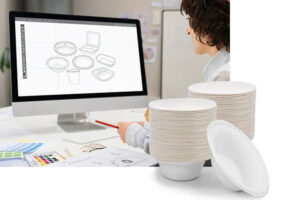
As governments tighten plastic bans and consumers demand greener options, bagasse is poised for rapid growth. Innovations such as enhanced coatings and hybrid materials are improving performance, while economies of scale are reducing costs.
Forecast: The global molded fiber packaging market, including bagasse, is projected to grow at over 6% annually through 2030, driven by policy support and consumer demand.
Conclusion
Bagasse tableware is more than just a substitute for plastic—it represents a shift toward circular economy solutions that turn waste into value. By transforming sugarcane residue into compostable plates and trays, bagasse offers a win-win for businesses and the environment.
For companies seeking scalable, sustainable, and internationally compliant solutions, DASHAN’s bagasse product line provides the reliability and performance needed to stay ahead in the green transition.
FAQ
1. What exactly is bagasse and how is it made into tableware?
Bagasse is sugarcane fiber left after juice extraction. It is pulped, molded, and pressed into durable tableware.
2. Is bagasse tableware safe for hot food and microwaves?
Yes. Bagasse products are both microwave- and freezer-safe, making them versatile for foodservice use.
3. How long does it take for bagasse products to decompose?
In industrial composting facilities, bagasse decomposes within 90–180 days.
4. Is bagasse tableware more expensive than plastic?
It can be slightly more expensive, but costs are decreasing as production scales and demand rises.
5. How do governments regulate bagasse packaging?
Bagasse is supported by plastic bans in the EU, US states with composting laws, and many Asian markets.
6. Can bagasse products be composted at home?
Home composting is possible in warm, moist environments, but decomposition is faster in industrial settings.
7. Why should restaurants consider switching to bagasse tableware?
It reduces environmental impact, complies with plastic bans, and improves brand image among eco-conscious customers.
References
-
European Bioplastics – Bioplastics Facts & Figures
https://www.european-bioplastics.org/bioplastics/facts-and-figures/ -
Biodegradable Products Institute (BPI) – Compostable Certification
https://bpiworld.org/ -
ASTM International – ASTM D6400 Standard
https://www.astm.org/d6400-21.html -
U.S. Environmental Protection Agency – Composting Basics
https://www.epa.gov/recycle/composting-home -
Springer – Molded Fiber Packaging from Agricultural Residues
https://link.springer.com/article/10.1007/s00289-018-2455-3 -
ScienceDirect – Bagasse and Biodegradable Packaging Research
https://www.sciencedirect.com/science/article/pii/S0141391019300133 -
Ellen MacArthur Foundation – Plastics and Circular Economy
https://ellenmacarthurfoundation.org/plastics

